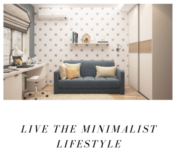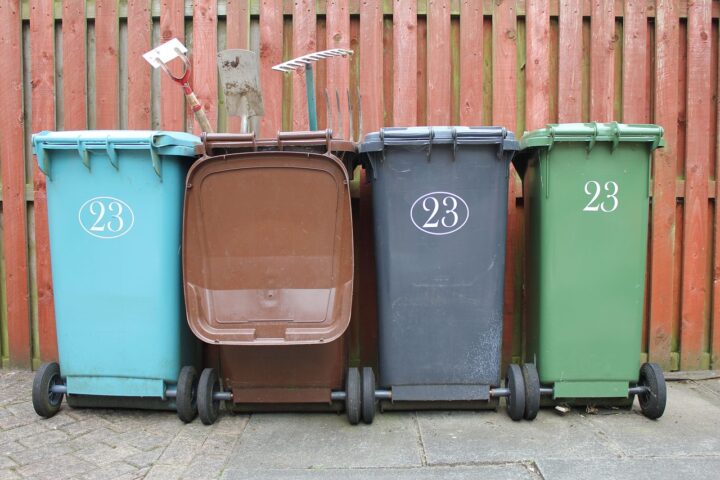Table of Contents
Things Minimalists Always Throw Out Daily: A Guide to Simplifying Your Space
Living in a clutter-free space can feel refreshing and calming. Many minimalists make it a daily habit to throw out items that no longer serve them. By adopting these practices, I’ve noticed a significant improvement in my focus and stress levels. Daily decluttering not only clears physical space but also creates mental clarity.

Every day, I focus on a few specific items that help maintain this serene environment. From old mail that piles up to expired products lurking in my bathroom cabinet, each item discarded contributes to a more organized life. These small actions can lead to big changes over time, making it easier to prioritize what truly matters.
If you’re looking to embrace minimalism or just want to reduce clutter in your home, this list of things to throw out daily can be a great starting point. I’m excited to share what I’ve learned on this journey toward simplicity.
Key Takeaways
- Daily decluttering creates a more organized living space.
- Throwing out unnecessary items simplifies decision-making.
- Embracing minimalism can lead to a calmer and more focused life.
- Discover things minimalists always throw out daily for a clutter free lifestyle.
The Philosophy of Minimalism
Minimalism is more than just living with fewer things; it’s a thoughtful approach to how I view my space and time. This philosophy encourages me to let go of what doesn’t serve a purpose while focusing on what truly adds value to my life.
Understanding Minimalism and Decluttering
For me, minimalism means simplifying life to its essentials. I often find that decluttering brings clarity and peace. When I remove unnecessary items, I create a more organized and productive environment.
I like to think of decluttering as an ongoing process. Each item I choose to keep should fulfill a need or bring joy. It’s about assessing what I own regularly, which helps prevent clutter from building up. By doing this, I can maintain a calm space that inspires creativity and focus.
Embracing Quality over Quantity
In my journey as a minimalist, embracing quality over quantity has been enlightening. I focus on finding high-quality items that last rather than accumulating numerous cheap products. This choice saves me money in the long run and brings more satisfaction.
When shopping, I ask myself if an item meets my needs and if it will serve me well over time. This careful selection enhances my productivity. With fewer but better possessions, I feel more motivated and inspired in my daily life. Prioritizing quality helps me create a space that supports my goals and values.
Daily Decluttering Habits
Keeping my space tidy is a daily commitment. By developing specific habits, I make sure my home stays clutter-free and calm. Here are some practical ways I focus on daily decluttering.
Routine Cleaning and Organizing
Every day, I take a few moments to tidy up. I believe setting aside just 10-15 minutes for routine cleaning can make a big difference. I start by making my bed and putting things back in their proper places.
My simple checklist includes:
- Wiping down surfaces
- Organizing items on countertops
- Sweeping or vacuuming high-traffic areas
This small routine helps me keep my home feeling fresh. It also prevents mess from piling up, making my organizing efforts much easier.
Identifying and Discarding Duplicates
I often find that having duplicates can create unnecessary clutter. I make it a habit to look for items I might have in excess. For example, do I really need five pairs of scissors?
When I identify duplicates, I ask myself:
- Do I use this often?
- Does it add value to my life?
If the answer is no, I let it go. This keeps my space clear and also helps me appreciate what I have.
Managing Paper Clutter
Paper clutter can be tricky to manage, but I take steps to keep it under control. Each day, I sort through incoming papers right away. Mail gets opened, and I’m quick to discard junk.
Here’s my paper management strategy:
- Have a designated spot for important documents.
- Use digital tools to reduce paper.
- Set aside a time each week to go through my papers.
These practices not only reduce clutter but also keep me organized. By addressing paper clutter daily, I don’t let it build up and overwhelm my space.
Creating a Clutter-Free Space
Keeping my space organized makes a big difference in my daily life. I’ve found that tackling specific areas keeps clutter at bay. Here’s what I focus on: managing junk mail and receipts, removing expired items, and tidying up miscellaneous items.
Dealing With the Junk Mail and Receipts
Junk mail can pile up quickly if I’m not careful. I set aside a few minutes each week to sort through it. I immediately toss any advertisements or offers that don’t interest me.
For receipts, I only keep those that are necessary, like for warranty purposes or important purchases. I file them in a designated folder. This way, I avoid clutter and can find what I need when I need it.
Those are two continuous things minimalists always throw out daily.
Eliminating Expired Items
Expired items in my kitchen can create unnecessary messes. I routinely check my pantry and fridge for outdated food. If I find anything that’s gone bad, I discard it right away.
I also pay attention to expired coupons, tossing them out when they’re no longer valid. This makes it easier to see what I have and plan meals effectively. Maintaining this habit keeps my space orderly and my meals fresh.
Tidying Up the Miscellaneous Items
Miscellaneous items can easily turn into chaos if I let them. I have a system for keeping these things organized. For example, I use baskets for small items like chargers and tools.
Every few weeks, I go through these baskets and remove anything I don’t use. This step keeps everything tidy and helps me see what I truly need. I focus on having my home represent a clutter-free environment that I enjoy living in.
Prioritizing Your Items
When it comes to minimalism, prioritizing items is essential for a clutter-free life. I focus on what truly matters in my home and daily routine. This often involves carefully selecting clothing, skincare products, and home design elements.
The Essentials in Clothing and Skincare
In my wardrobe, I stick to the essentials. I choose versatile pieces like a classic white shirt, a comfortable pair of jeans, and a cozy sweater. This helps me mix and match easily without overwhelming myself with choices.
For skincare, I focus on quality over quantity. I keep a few trusted products like a gentle cleanser, a moisturizer, and sunscreen. By doing this, I ensure my skin stays healthy without unnecessary clutter.
Making these choices means I can spend less time deciding and more time enjoying my day.
The Approach Towards Home Design
In home design, I aim for simplicity. I focus on functional furniture that serves a purpose while also looking good. For example, a bench with storage is great for seating and keeping my space tidy.
I also pay attention to decor. I choose a few meaningful pieces, like a family photo or a plant, that add character. This way, my home feels personal without being chaotic.
I avoid accumulating gift cards or items I don’t truly need. This prevents clutter from sneaking into my life, keeping my home inviting and serene.
Eco-Friendly Disposal and Recycling
I often think about how to dispose of my items responsibly, especially when decluttering. It’s important to recycle properly and consider eco-friendly methods to throw away things we no longer need.
Responsible Recycling Practices
I take note of what can be recycled before tossing items in the bin. Here’s a quick list of recyclable items I consider things minimalists always throw out daily:
- Empty containers: Many of my old toiletries and cleaning product bottles go here. I make sure to rinse them first.
- Online shopping packaging: Cardboard boxes and certain plastic wrap can be recycled, which keeps waste to a minimum.
- Outdated electronics: I look for e-waste recycling events in my area to get rid of these responsibly instead of throwing them in the trash.
I always check local recycling guidelines since they can vary. Some areas may accept more types of materials than others, so knowing what’s recyclable is key.
Disposing of Broken and Outdated Items
When I find broken items or expired products, I don’t just toss them! For broken items, I ask myself if they can be repaired or reused. If they are beyond help, I look for local disposal options. For example:
- Old makeup and skincare products: I usually find programs that accept unused or empty items for proper disposal.
- Out-of-date food: Instead of throwing food in the garbage, I compost what I can or check if my local waste management has specific disposal classes for organic waste.
- Small miscellaneous items: Items like loose buttons or bent bobby pins can be recycled in special collections for metal or fabric.
Finding the right disposal methods helps me feel better about my waste impact while keeping my space tidy.
Frequently Asked Questions
In this section, I’ll cover some common questions about minimalism and what it means to live with less. From everyday items that minimalists throw out to tips for maintaining a clutter-free space, I hope to clarify some key concepts.
What are the common things minimalists always throw out daily?
Minimalists often throw out items like expired food, unnecessary papers, and clothes they haven’t worn in a while. Other common discards include broken items, unused gadgets, and duplicates of everyday items. Keeping only what is truly needed helps maintain a clean environment.
How does the 90-90 rule guide minimalists in decluttering?
The 90-90 rule suggests that if I haven’t used an item in the last 90 days and don’t expect to need it in the next 90 days, I should consider getting rid of it. This rule helps me assess my belongings more objectively and encourages me to let go of things that truly aren’t essential.
What are considered essentials for someone adopting a minimalist lifestyle?
Essentials for minimalists typically include a few sets of clothing, basic kitchen tools, personal documents, and a small number of books or decor items. These essentials should serve a purpose and bring joy. The goal is to keep what is truly important while letting go of excess.
Can you participate in a 30-day minimalism challenge, and what does it entail?
Yes, I can participate in a 30-day minimalism challenge! This challenge usually involves decluttering one item on the first day, two items on the second day, and so on, until I reach 30 items on the last day. It’s a practical way to engage with minimalism gradually.
What strategies do minimalists use to avoid accumulating excess belongings?
To avoid accumulating excess belongings, minimalists often practice mindfulness when shopping. I focus on only buying items that I really need or that bring me joy. Additionally, I regularly reassess my belongings and make it a habit to discard or donate items I no longer use.
How do extreme minimalists manage with very few possessions, and what can we learn from them?
Extreme minimalists manage with very few possessions by prioritizing experiences over things. They often live with just a few items that serve multiple purposes. From their example, I can learn the importance of simplicity and how having less can lead to more freedom and peace of mind.

